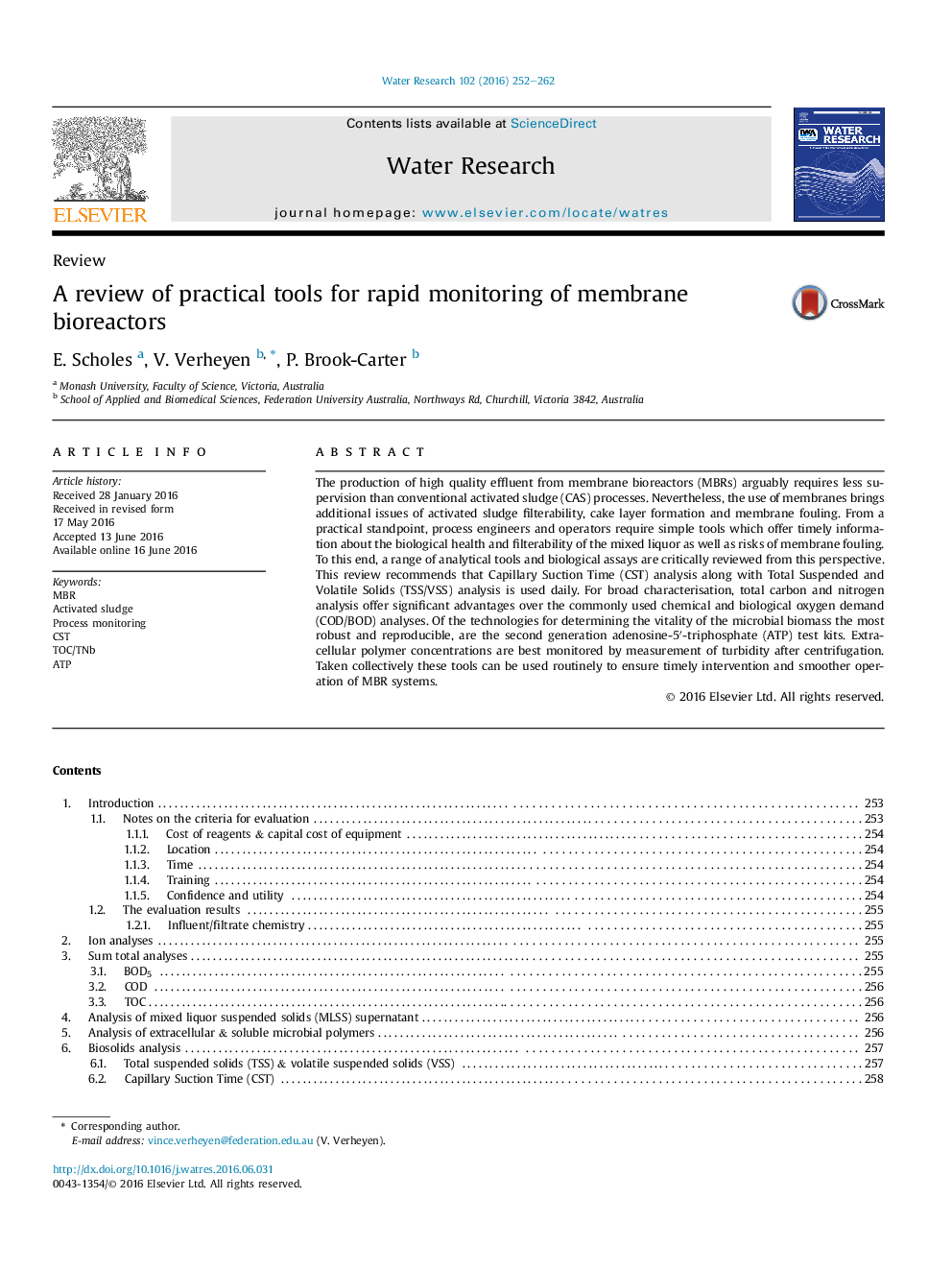| کد مقاله | کد نشریه | سال انتشار | مقاله انگلیسی | نسخه تمام متن |
|---|---|---|---|---|
| 4480833 | 1623066 | 2016 | 11 صفحه PDF | دانلود رایگان |
• Evaluates tools for utility in proactive MBR operation.
• CST is as essential as TSS/VSS for MLSS monitoring.
• Combination TOC/TNv analysis is more informative than BOD/COD.
• The best tool for microbial vitality is 2nd generation ATP monitoring.
The production of high quality effluent from membrane bioreactors (MBRs) arguably requires less supervision than conventional activated sludge (CAS) processes. Nevertheless, the use of membranes brings additional issues of activated sludge filterability, cake layer formation and membrane fouling. From a practical standpoint, process engineers and operators require simple tools which offer timely information about the biological health and filterability of the mixed liquor as well as risks of membrane fouling. To this end, a range of analytical tools and biological assays are critically reviewed from this perspective. This review recommends that Capillary Suction Time (CST) analysis along with Total Suspended and Volatile Solids (TSS/VSS) analysis is used daily. For broad characterisation, total carbon and nitrogen analysis offer significant advantages over the commonly used chemical and biological oxygen demand (COD/BOD) analyses. Of the technologies for determining the vitality of the microbial biomass the most robust and reproducible, are the second generation adenosine-5′-triphosphate (ATP) test kits. Extracellular polymer concentrations are best monitored by measurement of turbidity after centrifugation. Taken collectively these tools can be used routinely to ensure timely intervention and smoother operation of MBR systems.
Figure optionsDownload high-quality image (342 K)Download as PowerPoint slide
Journal: Water Research - Volume 102, 1 October 2016, Pages 252–262
